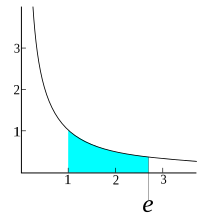
A survey of ‘Candidatus Liberibacter solanacearum’ in historical seed from collections of carrot and related Apiaceae species
Sign Up to like & getrecommendations! Published in 2017 at "European Journal of Plant Pathology"
DOI: 10.1007/s10658-017-1322-6
Abstract: The occurrence of ‘Candidatus Liberibacter solanacearum’ (Lso) was determined in commercial and wild species of the family Apiaceae, obtained from three seed collections held in the United Kingdom. The accessions dated from the 1970s and… read more here.
Keywords: seed; apiaceae species; liberibacter solanacearum; candidatus liberibacter ... See more keywords

First report of 'Candidatus Liberibacter solanacearum' on carrot in Serbia.
Sign Up to like & getrecommendations! Published in 2020 at "Plant disease"
DOI: 10.1094/pdis-11-20-2384-pdn
Abstract: At the beginning of July 2020, three-month-old carrot plants (Daucus carota L. variety Maestro F1) grown in a commercial field 1.2 ha in size at the Begeč locality (45°14'30.38" N 19°36'44.82" E) in southern part… read more here.
Keywords: carrot; liberibacter solanacearum; acc; calso ... See more keywords

Acquisition and transmission of "Candidatus Liberibacter solanacearum" differs among Wolbachia-infected and -uninfected haplotypes of Bactericera cockerelli.
Sign Up to like & getrecommendations! Published in 2023 at "Plant disease"
DOI: 10.1094/pdis-11-22-2701-re
Abstract: "Candidatus Liberibacter solanacearum" (Lso) causes disease symptoms and economic losses in potato, tomato, and other solanaceous crops in North America. Lso is transmitted to plants by potato psyllid, Bactericera cockerelli, which occurs as distinct haplotypes… read more here.
Keywords: infection; liberibacter solanacearum; candidatus liberibacter; lso ... See more keywords

Genetic Variation of 'Candidatus Liberibacter solanacearum' Haplotype C and Identification of a Novel Haplotype from Trioza urticae and Stinging Nettle.
Sign Up to like & getrecommendations! Published in 2018 at "Phytopathology"
DOI: 10.1094/phyto-12-17-0410-r
Abstract: 'Candidatus Liberibacter solanacearum' (CLso) haplotype C is associated with disease in carrots and transmitted by the carrot psyllid Trioza apicalis. To identify possible other sources and vectors of this pathogen in Finland, samples were taken… read more here.
Keywords: stinging nettle; urticae stinging; liberibacter solanacearum; haplotype ... See more keywords

Genome Analysis of Haplotype D of Candidatus Liberibacter Solanacearum
Sign Up to like & getrecommendations! Published in 2018 at "Frontiers in Microbiology"
DOI: 10.3389/fmicb.2018.02933
Abstract: Candidatus Liberibacter solanacearum (Lso) haplotype D (LsoD) is a suspected bacterial pathogen, spread by the phloem-feeding psyllid Bactericera trigonica Hodkinson and found to infect carrot plants throughout the Mediterranean. Haplotype D is one of six… read more here.
Keywords: liberibacter solanacearum; haplotype; candidatus liberibacter; lso ... See more keywords

Exogenous Application of Polycationic Nanobactericide on Tomato Plants Reduces the Candidatus Liberibacter Solanacearum Infection
Sign Up to like & getrecommendations! Published in 2021 at "Plants"
DOI: 10.3390/plants10102096
Abstract: Candidatus Liberibacter solanacearum (CaLso) is associated with diseases in tomato crops and transmitted by the tomato psyllid Bactericera cockerelli. A polymeric water-dispersible nanobactericide (PNB) was evaluated against CaLso as a different alternative. PNB is a… read more here.
Keywords: bacterial load; liberibacter solanacearum; tomato plants; tomato ... See more keywords